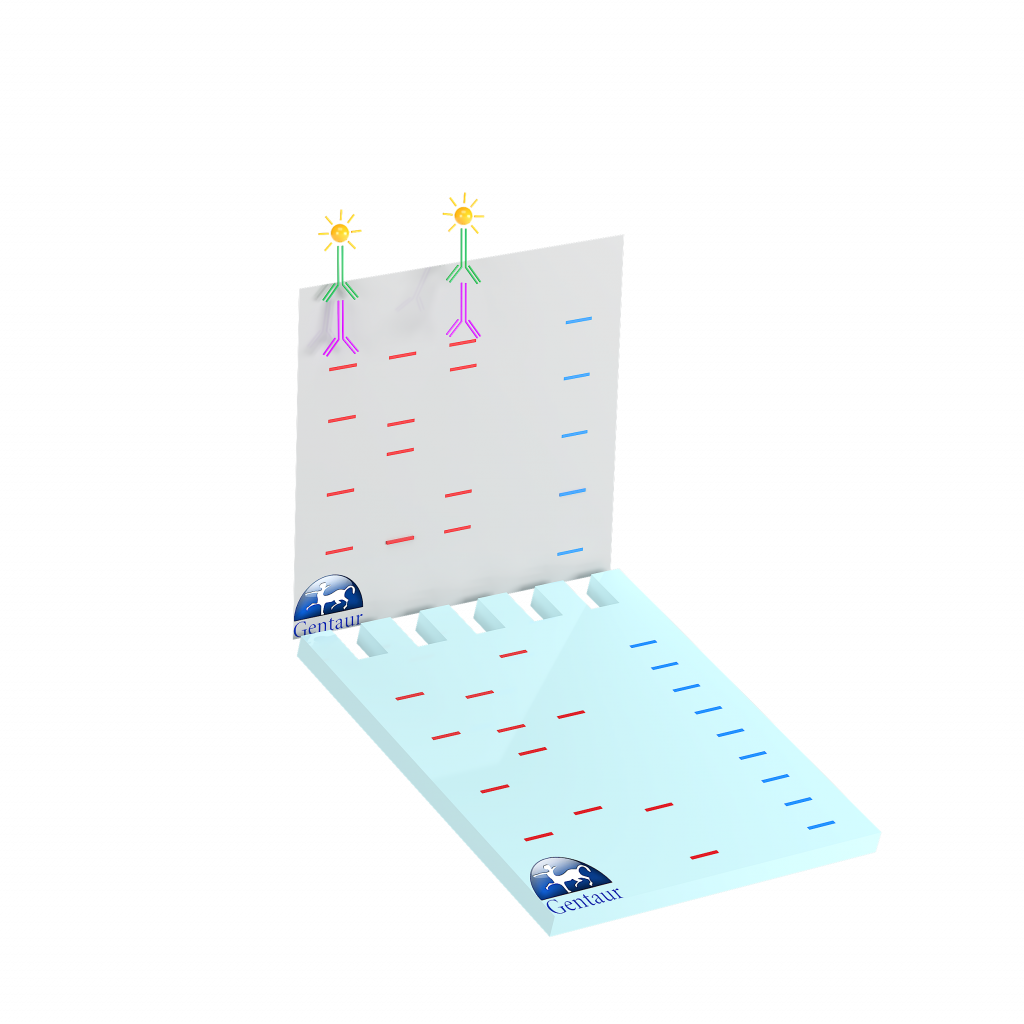Learn about Western Blotting with Rabbit or Goat Poly-clonal Antibodies
Western Blot
Western blotting is to protein epitopes, as Southern blot is to cDNA, genomic DNA and RNA is to Northern blotting.
In all blot Protocols, samples are separated by SDS Page and are transferred from a gel to a membrane.
The membrane is then probed with factors which are specific for amino acids (western) or nucleotide (Southern and Northern)
Polyclonal Antibodies for WB
Western blot uses antibodies which detect denaturated proteins. The antibodies react specifically with antigenic epitopes on the target protein which are attached to the PVDF or Nitrocellulose.
Western blotting is an important technique for the detection and quantification of proteins that are not radiolabeled.
Western blotting can detect as little as 0.5 ng of protein an average sized protein in kDa.
The major difference between Western blotting and Northern / Southern blotting is the properties of the probes used in the detection of proteins. Whereas nucleic acids are used as probes in the other blotting techniques, western blotting uses antibodies to probe for target proteins of interest. Antibodies behave much differently however than nucleic acid probes.
Western blotting or Immunoblotting is used to determine the size and quantity of protein antigens which react with a specific antibody.
Suppliers for Western Blot reagents for protein Electrophoresis also have a technical support them to assist you with the selection of the right tools.
Electrophoresis first separates the proteins through an SDS-polycacrylamide gel and then the proteins are transferred electrophoretically from gel to membrane.
Types of Western Blotting Membranes:
- Nitrocellulose
- Nylon and positively charged membranes
- PVDF polyvinylidene fluoride

